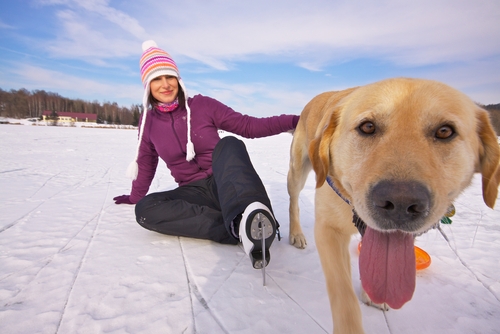By ACSM
Like a lively puppy that is thriving, joyously active and everywhere at once, Let’s Move! has energized America with no sign of slowing down. In just a year, First Lady Michelle Obama’s initiative has prompted families, individuals and organizations to take health into their own hands. Collectively, we’re eating better and finding ways to be more physically active. It adds up to healthier lifestyles for a whole spectrum of people and reflects encouraging momentum in the fight against childhood obesity.

As more and more of us connect the dots – through Let’s Move!, the National Physical Activity Plan, Exercise is Medicine (EIM) and countless other initiatives – we’re helping the movement mature. Recounting success stories and lessons learned lets us share best practices. EIM on Campus connects colleges and universities with one another, but also with their local communities. Groups like the National Society of Physical Activity Practitioners in Public Health allow professionals to learn from one another and share resources.
We’re learning not only from one another, but from new research about exercise, nutrition, physiology and motivation. This is essential to make sure our programs and policies will be effective. From molecular-level, basic science to studies of group interaction and epidemiology, new knowledge is providing a solid base of evidence to underpin our efforts.
Similarly, approaches to healthier lifestyles range from the granular to the global. We know that every bite we consume, every calorie expended, brings with it a health impact. Individual actions become habits, with immense effects on individuals over time. Family members influence one another, and whole communties can gain a collective consciousness or identity around healthy lifestyles (think Portland, Oregon, where bicycling is a shared passion).

A spectrum of solutions
Some of us emphasize physical activity and exercise, but we know that’s just one factor in the health equation. Nutrition plays a huge role, as do tobacco and alcohol use, air quality and more. We’ve learned that all these elements must work together, and that healthy behaviors must become part of our everyday lives to be effective. And their adoption requires the kind of one-on-one modeling that happens in families, classrooms and circles of friends – but also the collective action that is reflected in organizational and community policies.
The vision reflects the range of benefits, from individual health and quality of life to societal gains in worker productivity and reduced health care costs. We’re getting there, thanks to a growing foundation of research, immeasurable individual effort, and the unstoppable enthusiasm of initiatives like Let’s Move.
How do your efforts complement the work of Let’s Move!, the National Physical Activity Plan and other initiatives?
How can we activate more people to “think globally; act locally” to foster healthier lifestyles?